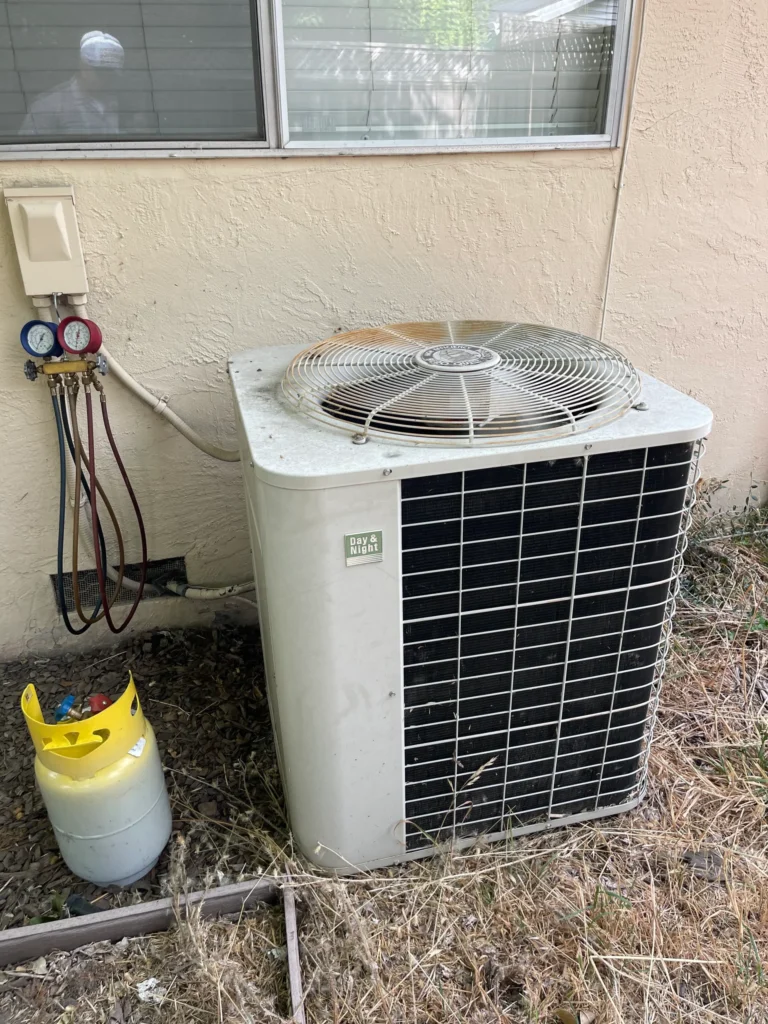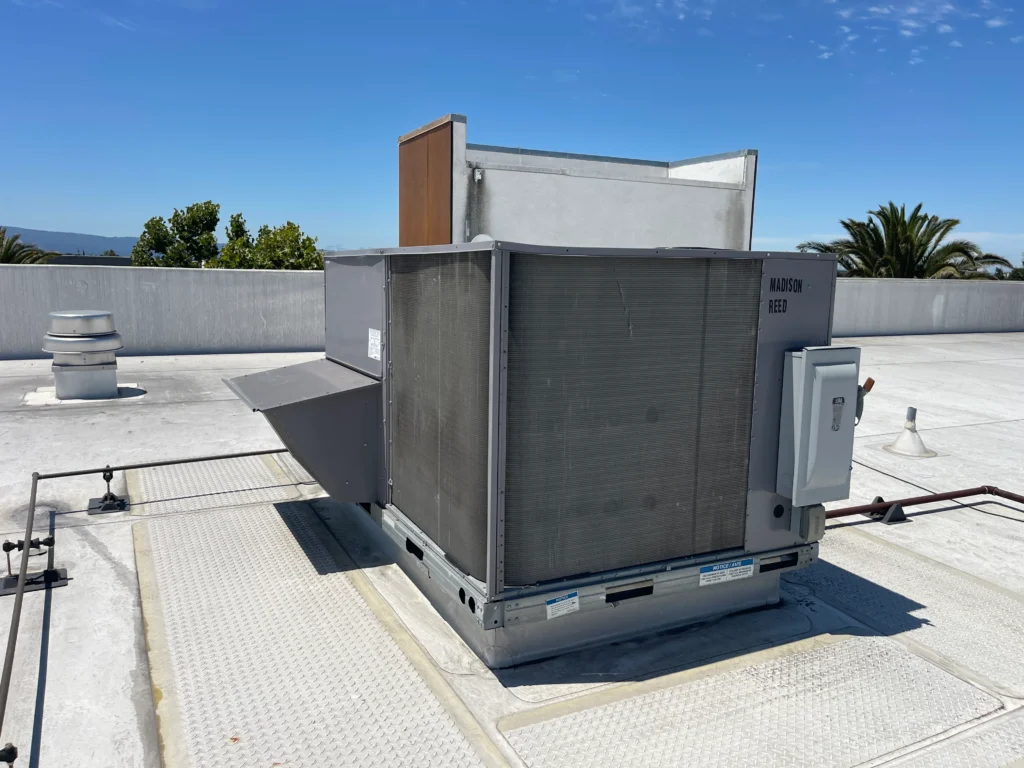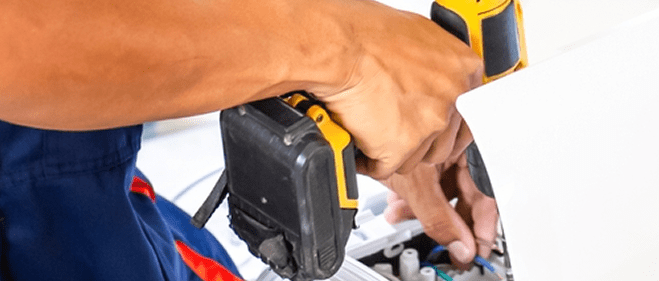Residential HVAC Replacement Services in the Bay Area
Table of Contents
Residential HVAC Replacement Services in the Bay Area
Your home’s HVAC system is one of the most important investments you’ll make in your family’s comfort and your property’s value. When that system starts failing, showing signs of age, or driving up energy bills month after month, the decision to replace becomes critical—not just for comfort, but for your wallet too.
Many Bay Area homeowners struggle with the timing of HVAC replacement. Should you repair that aging system one more time, or invest in a modern, energy-efficient unit that could slash your monthly utility bills? The answer often depends on factors you might not have considered, from the true age of your equipment to the hidden costs of keeping an inefficient system running.
This comprehensive guide reveals the clear signs that indicate replacement time has arrived, walks you through our proven replacement process, and demonstrates how today’s energy-efficient systems deliver both immediate comfort improvements and long-term savings that make the investment worthwhile.

Is It Time to Replace Your Home HVAC System?
The decision to replace your HVAC system involves more than just waiting for complete failure. Smart homeowners recognize the warning signs and economic indicators that make replacement the better financial choice compared to continued repairs and high energy costs.
Understanding when replacement makes sense helps you plan for this significant investment while avoiding emergency situations that force hasty decisions and higher costs. Most HVAC systems provide clear signals when they’re nearing the end of their useful life.
Frequent Repairs, High Bills, or Unit Over 15 Years Old?
Frequent repair calls signal that your HVAC system has entered its failure phase, where multiple components begin breaking down in succession. When repair costs start mounting, replacement often provides better long-term value than continued emergency fixes.
The 50% rule provides a clear decision framework: if a single repair costs more than 50% of replacement cost, or if annual repairs exceed that threshold, replacement makes financial sense. A typical residential HVAC replacement costs $8,000-15,000, making the replacement threshold approximately $4,000-7,500 in annual repairs.
Cascading failures become common in aging systems as one component failure stresses others beyond their design limits. When your compressor fails, the resulting refrigerant loss may damage other components. When motors fail, electrical problems often follow. These interconnected failures make repair costs spiral quickly.
Emergency repair premiums add 50-100% to standard repair costs during nights, weekends, and peak season periods. Systems that fail during Bay Area’s hottest days often require emergency service that costs significantly more than planned replacements.
Rising energy bills without corresponding increases in usage indicate declining system efficiency that wastes money every month. HVAC systems account for 40-60% of residential energy consumption, making efficiency losses expensive over time.
Older systems lose approximately 5-7% efficiency annually through normal wear and component degradation. A 15-year-old system operating at 60% of original efficiency wastes 40% of energy consumption—often $100-200 monthly for typical Bay Area homes.
Seasonal efficiency variations become pronounced in aging systems that struggle more during peak demand periods. Summer cooling bills that spike dramatically compared to previous years suggest compressor or refrigerant system problems that reduce efficiency significantly.
System age over 15 years indicates approaching end-of-life regardless of current performance levels. While some systems last longer, 15-20 years represents typical residential HVAC lifespan in demanding climates like the Bay Area’s varied microclimates.
Refrigerant phase-outs affect older systems using R-22 refrigerant, which is no longer manufactured. R-22 replacement costs have increased 300-400% as supplies dwindle, making leak repairs extremely expensive. New systems use modern refrigerants that cost less and perform better.
Parts availability becomes problematic for systems over 15 years old as manufacturers discontinue components for discontinued models. When critical parts become unavailable, replacement becomes necessary regardless of system condition.
Technology obsolescence means older systems lack modern features like variable-speed operation, smart controls, and advanced filtration that improve comfort while reducing energy consumption. These missing features represent ongoing comfort and efficiency penalties.
Our HVAC Replacement Process
Professional HVAC replacement involves systematic evaluation, precise equipment sizing, and expert installation that ensures optimal performance from day one. This comprehensive process protects your investment while delivering the comfort and efficiency improvements that justify replacement costs.
Our proven replacement process typically takes 2-4 days from assessment to completion, depending on system complexity and installation requirements. Professional project management coordinates all aspects while minimizing disruption to your daily routine.
In-Home Assessment → System Match → Expert Installation
Comprehensive in-home assessment evaluates your current system, home characteristics, and comfort needs to determine optimal replacement approaches. Professional assessment goes far beyond simple equipment sizing to consider factors that affect long-term satisfaction and efficiency.
Load calculation analysis determines precise heating and cooling requirements based on your home’s size, insulation, window placement, and orientation. Proper load calculations ensure replacement systems provide adequate capacity without oversizing that wastes energy and reduces comfort.
Ductwork evaluation identifies distribution problems that could limit new system performance. Undersized ducts, excessive restriction, or air leakage can prevent new systems from delivering rated efficiency. Professional assessment identifies ductwork improvements that maximize replacement system benefits.
Home energy audit services identify insulation, sealing, and efficiency improvements that reduce HVAC loads while improving comfort. These improvements often allow smaller, less expensive systems while delivering better performance than larger systems in unimproved homes.
Precise system matching ensures replacement equipment delivers optimal performance for your specific home and comfort preferences. Professional equipment selection considers efficiency ratings, capacity requirements, and feature preferences that affect long-term satisfaction.
Equipment sizing calculations account for Bay Area’s diverse microclimates, from coastal fog to inland heat, ensuring systems handle local weather extremes effectively. Proper sizing prevents short cycling in mild weather while ensuring adequate capacity during peak demand periods.
Energy efficiency analysis compares different equipment options to identify systems that provide the best balance of initial cost and operating savings. High-efficiency systems often pay for themselves within 5-8 years through reduced energy consumption.
Feature integration planning ensures new systems work with existing ductwork, electrical systems, and smart home technology. Professional planning prevents compatibility issues while enabling future upgrades and enhancements.
Expert installation procedures ensure replacement systems operate at rated efficiency while providing long service life. Professional installation techniques follow manufacturer specifications while addressing site-specific requirements and local code compliance.
Permit acquisition and approval streamline the regulatory process while ensuring all installations meet local building and safety codes. Professional contractors handle permit applications and coordinate inspections, removing administrative burdens from homeowners.
Quality control inspections verify proper installation at each stage, from ductwork modifications through final system commissioning. Multi-point inspections ensure optimal performance while preventing installation problems that could affect efficiency or reliability.
System commissioning includes performance testing, airflow balancing, and control programming that optimizes operation for your specific home. Professional commissioning ensures you receive the full efficiency and comfort benefits that modern systems provide.

Modern Systems for Efficiency and Comfort
Today’s residential HVAC systems achieve remarkable efficiency improvements compared to equipment installed just 10-15 years ago. Advanced technology, smart controls, and improved design work together to deliver superior comfort while dramatically reducing energy consumption.
Modern high-efficiency systems often achieve 30-50% energy savings compared to older equipment, translating into substantial monthly utility bill reductions that help offset replacement costs over time.
Energy Star Units That Reduce Monthly Costs
Variable-speed technology in modern systems adjusts output to match actual heating and cooling demand, eliminating the energy waste that single-speed systems create through frequent on-off cycling. This technology provides more consistent temperatures while reducing energy consumption by 20-30%.
Variable-speed air handlers move air more efficiently while providing better humidity control and air filtration. These advanced systems can operate at low speeds for continuous air circulation that maintains more even temperatures throughout your home.
Two-stage and modulating gas furnaces provide more precise temperature control while achieving higher efficiency ratings. These systems operate at lower capacity during mild weather, reducing energy consumption while providing more consistent comfort.
Smart thermostat integration enables advanced control features including learning algorithms, remote access, and energy optimization that reduce consumption while maintaining comfort. Smart thermostats can reduce HVAC energy consumption by 10-15% through intelligent scheduling and setback strategies.
Zoning system compatibility allows different areas of your home to be heated and cooled independently, preventing energy waste in unused spaces while maintaining comfort where needed. Zoning systems work particularly well in Bay Area homes with varied sun exposure and usage patterns.
Maintenance reminders and system diagnostics help optimize performance while preventing problems that reduce efficiency. Smart systems can identify developing issues while scheduling maintenance automatically.
Advanced filtration systems in modern equipment provide superior indoor air quality while maintaining efficient airflow. High-efficiency filters remove allergens, dust, and pollutants without creating excessive pressure drops that waste fan energy.
Whole-house air purification options including UV lights and electronic air cleaners provide comprehensive indoor air quality improvement. These systems work seamlessly with modern HVAC equipment while requiring minimal maintenance.
Humidity control features maintain optimal indoor humidity levels year-round, improving comfort while preventing mold growth and structural damage. Proper humidity control reduces cooling loads while making your home feel more comfortable at higher temperatures.
Heat pump technology provides both heating and cooling through efficient refrigeration cycles that can reduce energy costs by 40-60% compared to traditional heating systems. Modern heat pumps work effectively in Bay Area climates while providing year-round comfort.
Cold-climate heat pumps maintain efficiency during winter weather that would reduce performance in older systems. Advanced refrigeration technology enables effective heating even when outdoor temperatures drop significantly.
Backup heating integration ensures reliable comfort during extreme weather while maintaining efficiency during normal operating conditions. Dual-fuel systems automatically switch between heat pump and gas heating based on efficiency and comfort requirements.

Emergency HVAC Issues We Fix
Your system may need urgent attention if you’re experiencing:
- No airflow from vents
- Furnace blowing cold air
- AC blowing warm air
- System won’t turn on
- Iced-over AC or refrigerant line
- Thermostat not responding
- Loud, unusual noises from the unit
- Weak airflow or poor indoor air quality
- Water leaks around the unit
- Burning smells or electrical odor
- Complete system failure
If you notice any of these signs, don’t wait. Contact COOL AID for immediate HVAC help.
Transparent Pricing & Financing Options
HVAC replacement represents a significant home improvement investment that deserves clear, honest pricing without hidden fees or surprise charges. Professional contractors provide detailed estimates that help homeowners understand all costs while making informed decisions about equipment and installation options.
Transparent pricing builds trust while enabling accurate budgeting for this important investment. Quality installations justify their cost through improved performance, reliability, and energy savings that provide long-term value.
No Surprises – Just Straightforward Estimates
Detailed written estimates provide comprehensive breakdowns of equipment costs, installation labor, permit fees, and any additional work required for proper installation. Professional estimates eliminate guesswork while enabling accurate cost comparisons between different options.
Equipment specifications include efficiency ratings, warranty coverage, and feature descriptions that help homeowners understand the value proposition for different system options. Clear specifications prevent confusion while ensuring informed decision-making.
Installation scope descriptions explain all work included in quoted prices, from electrical connections and ductwork modifications to cleanup and disposal services. Comprehensive scope definitions prevent disputes while ensuring complete installations.
Change order procedures address unforeseen conditions that might affect project costs while maintaining transparent pricing throughout installation. Professional contractors explain potential additional costs upfront while providing clear procedures for handling unexpected situations.
Multiple financing options make quality HVAC replacement affordable while preserving savings for other priorities. Financing programs often provide better cash flow management than paying full replacement costs upfront.
Zero-percent financing promotions periodically available through manufacturer programs can eliminate financing costs while spreading payments over several years. These promotional programs provide excellent value when timing aligns with replacement needs.
Extended payment terms enable lower monthly payments that align with energy savings from high-efficiency equipment. Many homeowners find that financing payments are offset partially or completely by reduced utility bills.
Credit approval processes are streamlined to provide quick decisions while offering various options for different financial situations. Professional contractors work with multiple financing partners to find suitable programs for most homeowners.
Value-based pricing ensures replacement costs align with delivered benefits including energy savings, comfort improvements, and reliability gains. Quality installations provide lasting value that justifies investment through years of superior performance.
Energy savings calculations help homeowners understand long-term financial benefits that make high-efficiency equipment worthwhile despite higher upfront costs. Professional analysis quantifies savings while providing realistic payback timeframes.
Warranty value represents significant protection that quality contractors include in installation prices. Comprehensive warranties on both equipment and installation work provide peace of mind while protecting your investment.
Transform Your Home’s Comfort with Professional HVAC Replacement
Your home’s HVAC system replacement represents an opportunity to dramatically improve comfort, reduce energy costs, and increase property value through modern, efficient equipment. Professional replacement ensures you realize these benefits immediately while avoiding the problems that amateur installation creates.
Don’t continue wasting money on an inefficient, unreliable system that fails to deliver the comfort your family deserves. Modern HVAC systems provide remarkable improvements in efficiency, quiet operation, and precise temperature control that transform your home environment.
The energy savings from professional HVAC replacement often offset monthly financing payments while providing improved comfort and reliability. This investment in your home’s mechanical systems pays dividends through lower utility bills and increased property value.
Ready to upgrade your home with professional HVAC replacement that delivers lasting comfort and savings? Contact 1800CoolAid today for your free in-home assessment and straightforward estimate on energy-efficient systems designed for Bay Area homes. Our experienced technicians provide expert installation with transparent pricing and financing options that make quality HVAC replacement affordable. Don’t wait for your old system to fail completely—invest in the modern, efficient comfort your family deserves.
Take Action: Protect Your Investment Today
Your commercial HVAC system is too important to leave to chance. Regular maintenance protects your investment, reduces operating costs, and ensures reliable comfort for your employees and customers.
Don’t wait for a breakdown to give your system the attention it deserves. Proactive maintenance costs less than reactive repairs and keeps your business running smoothly year-round.
Ready to experience the benefits of professional commercial HVAC maintenance? Contact 1800coolaid.com today to schedule a comprehensive system evaluation and learn about our tailored maintenance plans designed specifically for Bay Area businesses. Our certified technicians provide transparent pricing, guaranteed satisfaction, and the expertise your system needs to perform at its best.
Frequently Asked Questions
How long does HVAC replacement typically take?
Most residential HVAC replacements take 1-2 days depending on system complexity and any required ductwork modifications. We coordinate installation around your schedule while ensuring quality work that meets all code requirements.
What size HVAC system does my home need?
System sizing depends on your home’s square footage, insulation levels, window placement, and local climate factors. Our free assessment includes professional load calculations that determine optimal system size for efficiency and comfort.
Do high-efficiency systems really save enough to justify higher costs?
Yes, high-efficiency systems typically save 20-40% on energy costs compared to standard equipment. For Bay Area homes spending $200-400 monthly on heating and cooling, this represents $500-1,600 annual savings that often pays for efficiency upgrades within 5-8 years.
Serving the Entire Bay Area
We proudly serve customers in:
